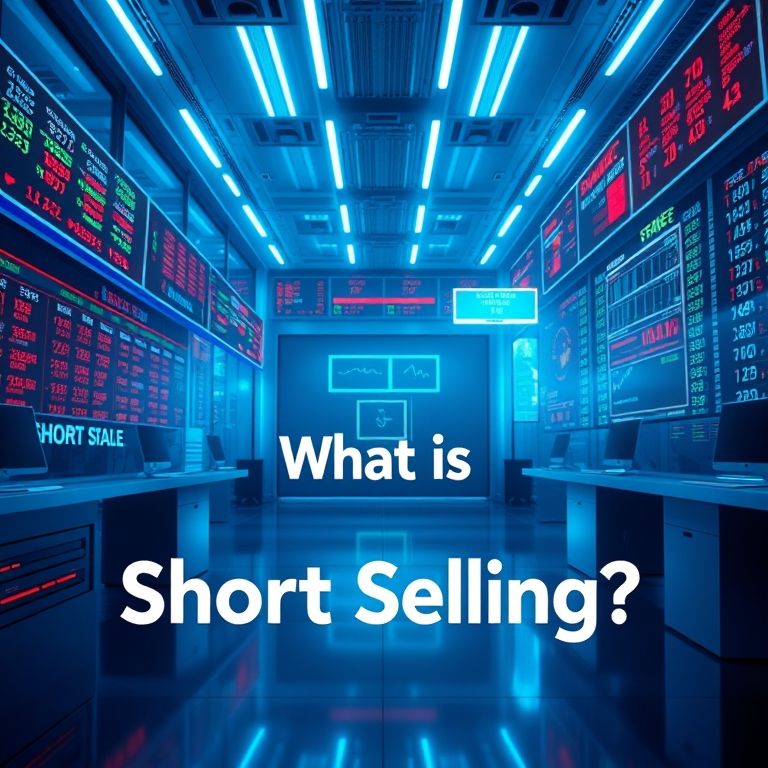what is a short trading
What is a Short Trading?
In plain terms, short trading means betting that a price will fall. You don’t have to wait for a price to go up to make money; you can enter a position that profits when the asset declines. It’s a core technique across markets, from stocks and forex to crypto and commodities, and it’s a big part of how traders manage risk and seize opportunity in uncertain times.

How short trading works
- The basic idea: you borrow an asset, sell it now at the current price, then buy it back later. If the price drops, you pocket the difference minus costs. If it rises, you incur a loss.
- Fees and risks add up: borrowing costs, interest, and the risk of a margin call when price moves against you. Shorting isn’t free money; it’s a disciplined bet on timing and risk controls.
- It’s not one-size-fits-all: there are several flavors—spot shorting on certain platforms, futures contracts, perpetual swaps, and options strategies—that let you tailor risk and capital use.
What you can short across markets
- Forex: A classic arena for short trading. If you believe the euro will weaken against the dollar, you can open a short on the EUR/USD pair and aim to profit from the decline.
- Stocks: Short selling a stock is common during weak earnings or sector rotations. Traders borrow shares and sell them, planning to buy back at a lower price after bad news or a pullback.
- Crypto: Perpetual futures and margin trading offer ways to bet on downtrends in volatile tokens. The crypto space adds liquidity and execution challenges but also new hedging tools.
- Indices: Shorting broad markets or sector indices can hedge a diversified portfolio or capitalize on a downturn in risk-on sentiment.
- Options: Put options or selling call spreads can simulate a short view with defined risk and premium income, which can be easier to manage for beginners.
- Commodities: Shorting oil, gold, or agricultural futures lets you trade macro narratives like demand slowdown or supply shocks.
Why traders use short trading
- Profit from declines: markets aren’t always rising. Shorting helps you monetize downtrends and diversify your risk signals.
- Hedging: if you own a position that would suffer in a downturn, a short hedge can reduce net exposure.
- Market discovery: short activity can reveal overvaluations and accelerate price corrections, adding liquidity and depth to markets.
Key risks and cautions
- Margin and leverage: higher leverage magnifies both gains and losses. A small price move can wipe out a large portion of capital.
- Short squeezes: if a heavily shorted asset rallies suddenly, shorts may rush to cover, driving prices higher in a feedback loop.
- Borrow costs and availability: not all assets are easy to borrow, and ongoing borrowing costs can eat into profits.
- Unlimited downside (theoretical): unlike buying a stock outright where losses are capped at the amount invested, a short position can incur unlimited losses if prices skyrocket.
Reliability, tools, and charting
- Platforms matter: choose reputable exchanges and brokers with transparent margin rules, robust risk controls, and strong security.
- Chart analysis and indicators: price action, volume, drift, and volatility measures help you time entries and exits. Combine with risk metrics like stop losses and daily loss limits.
- Safety basics: enable two-factor authentication, use verified withdrawal whitelists, and keep sensitive keys offline when possible. Diversify across platforms to avoid single-point failures.
Web3, DeFi, and the challenge of decentralization
- DeFi shorting exists in perpetuals, synthetic assets, and lending markets, offering censorship-resistant exposure without traditional intermediaries.
- Challenges include liquidity fragmentation, oracle risk, smart contract bugs, and evolving regulatory scrutiny. Gas fees, timing, and settlement speeds also affect real-world viability.
- The upside is control and composability: you can integrate short strategies into broader DeFi workflows, hedging live positions with programmatic rules.
Future trends: smart contracts, AI, and beyond
- Smart contract trading: automated, rules-based shorting that executes when predefined conditions are met, reducing emotional bias.
- AI-driven signals: machine learning can help spot structural weaknesses in price behavior, improving timing and risk scoring.
- Cross-chain efficiency: better interoperability and price feeds enable more robust short positions across multiple networks.
- Responsible automation: as AI grows, robust risk checks, circuit breakers, and human-in-the-loop controls will be essential to avoid outsized losses.
Practical tips for traders
- Start small and learn the rhythm: use demo accounts or small positions to understand borrowing costs, slippage, and execution speed.
- Define risk per trade: a fixed percent of capital, with a hard stop and a maximum daily loss limit.
- Use hedges and diversified views: pair a short with targeted hedges or scale into several assets to avoid concentrated risk.
- Keep a trading journal: note what worked, what didn’t, and how news flow or macro events affected outcomes.
Slogans to keep you inspired
- Short the fear, ride the trend.
- Bet on the downside, but guard the upside.
- Trade the forecast, not the noise.
In a world moving toward decentralized finance, short trading remains a powerful tool—when used with discipline, solid risk controls, and the right tech stack. It’s about reading the moment, respecting the risk, and leveraging tools—from charting and margin rules to DeFi futures and AI-assisted signals—to stay ahead. The path ahead is bright for those who blend traditional wisdom with smart contracts, automation, and ongoing security vigilance. If you’re ready to explore, a well-constructed short strategy can be a practical complement to a resilient, diversified portfolio. Short smart. Stay curious. Stay cautious. And let the data guide you.
YOU MAY ALSO LIKE




